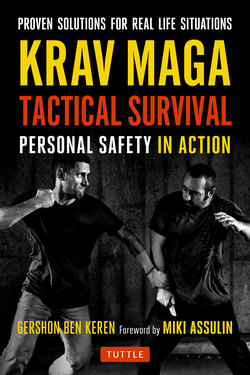Читать книгу Krav Maga Tactical Survival - Гершон Бен Керен - Страница 8
На сайте Литреса книга снята с продажи.
ОглавлениеPART II
Armed and Unarmed Self-Defense Scenarios
De-escalation
When you find yourself dealing with an aggressive and emotional individual, you should start by asking yourself a simple question: is this a premeditated situation or a spontaneous one? In a premeditated act of aggression/violence, your aggressor has planned and/or orchestrated the situation and has an outcome in mind. They may, for example, be a mugger who has acquired a weapon, chosen a location, selected a victim, and is looking to take their wallet or purse, etc. In a spontaneous act of violence, the aggressor did not enter the situation with any plans to become aggressive. Rather, your actions or behavior—whether real or perceived—caused them to become angry and violent; perhaps you spilled a drink on them, or cut them off in traffic, or cut in front of them in line. The wrongdoing may be imagined or perceived on their part, but their belief in the injustice means that they have become aggressive and therefore dangerous. One of the big differences between spontaneous and premeditated acts of violence is that in spontaneous acts of violence, your aggressor has no predefined outcomes; they don’t know what they want from the situation—unlike a mugger or sexual assailant, who has very clear objectives that they are looking to achieve.
In premeditated acts of aggression, you have two choices: you can either acquiesce to your aggressor’s demands or you can resist them—that is, fight. If a mugger wants your wallet, you can give it to them, or you can attempt to deal with them physically; trying to talk them out of mugging you is not an option. Because an aggressor in a spontaneous act of violence doesn’t come to a situation with a particular outcome in mind, you will in all likelihood have the opportunity to present other non-violent solutions and alternatives. If you have inadvertently spilled a drink on someone, they won’t know what will make the situation right for them; they may feel in the moment that they have no alternatives but to act violently against you. If the option is presented in the right way, however, they may come to accept that other non-violent routes are open to them, such as accepting a replacement drink from you, having you pay for their dry cleaning, etc.
The only way an aggressive individual will be able to consider these alternatives to violence is if their high and volatile emotional state can be reduced, so that they are able to consider non-violent solutions to the situation. This is the goal and purpose of the de-escalation process.
